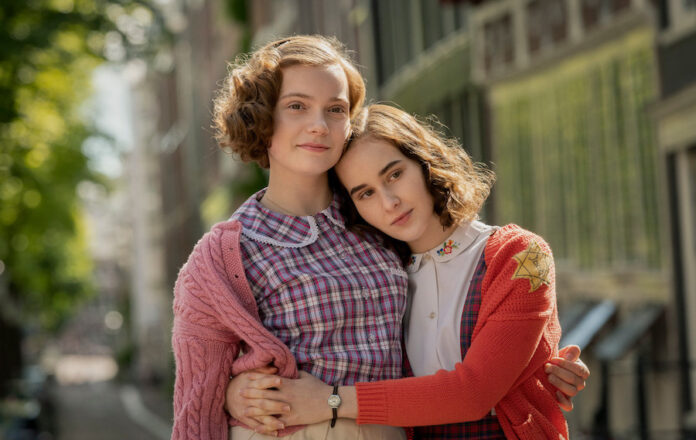CHENNAI: A true story of a lovely friendship between two bubbly teenage girls in 1942 German-occupied Amsterdam, “My Best Friend Anne Frank” is one of the many films on World War II and the Holocaust we have watched – most notably Roman Polanski’s Adrien Brody-starrer “The Pianist,” a terribly depressing account of Hitler’s atrocities.
Most recently, we reviewed “Munich – The Edge of War,” which is about two friends from Oxford who later in life make every effort to stop the Nazi grand plan of taking all of Europe. In a way, “My Best Friend Anne Frank” is also about an enduring relationship which passes the test of distressing days in a concentration camp.
Caption
The film, directed by Ben Sombogaart and now playing on Netflix, begins in 1942 with Hannah Goslar (Josephine Arendsen) and Anne Frank (Aiko Beemsterboer) as inseparable friends. Later, we see the risks that Hannah will take to help Anne in the camp where the two are imprisoned separately.
Dodging German soldiers and searchlights at night, Hannah smuggles food for a sick and starving Anne. With the liberation of Holland just days away, Hannah’s spirits, despite terrible times in the camp, are soaring, and she is looking forward to being with her best friend Anne – hoping to recreate, all over again, their happy and carefree days in Amsterdam.
The movie runs back and forth between Amsterdam and the camp – and it divides the two periods in a way that is splendidly contrasting and seamlessly smooth. While the friends’ younger days are shown in bright colors, production designer Barbara Westra and cinematographer Jan Moeskops turn to darker shades of gray for the scenes in the Bergen-Belsen concentration camp.
The film is directed by Ben Sombogaart. Supplied
At the camp, a smudgy-faced Hannah moves around in darkly drab surroundings conveying an underlying mix of hope and hopelessness, and the writers, Paul Ruven and Marian Batavier, bide their time to present Anne much later. A little more of detailing of her character – and mind you she is the one who suffers much more than Hannah – would have added a great deal of punch. The scene in which she pleads with Hannah from across the wall to get her food is painful to watch.
Apart from this, Sombogaart takes a more convenient approach by presenting a sanitized viewpoint of the Holocaust with much of the cruelty hidden from the girls. We hear gunshots, but seldom the actual violence, and even when Hannah’s pregnant mother is roughed up by soldiers, a strange kind of unnatural mood prevails.
In short, “My Best Friend Anne Frank” could have done with a little more drama. Did the director want to take us away from a feeling of anguish, instead attempting something frothy? It does not quite work, though.

